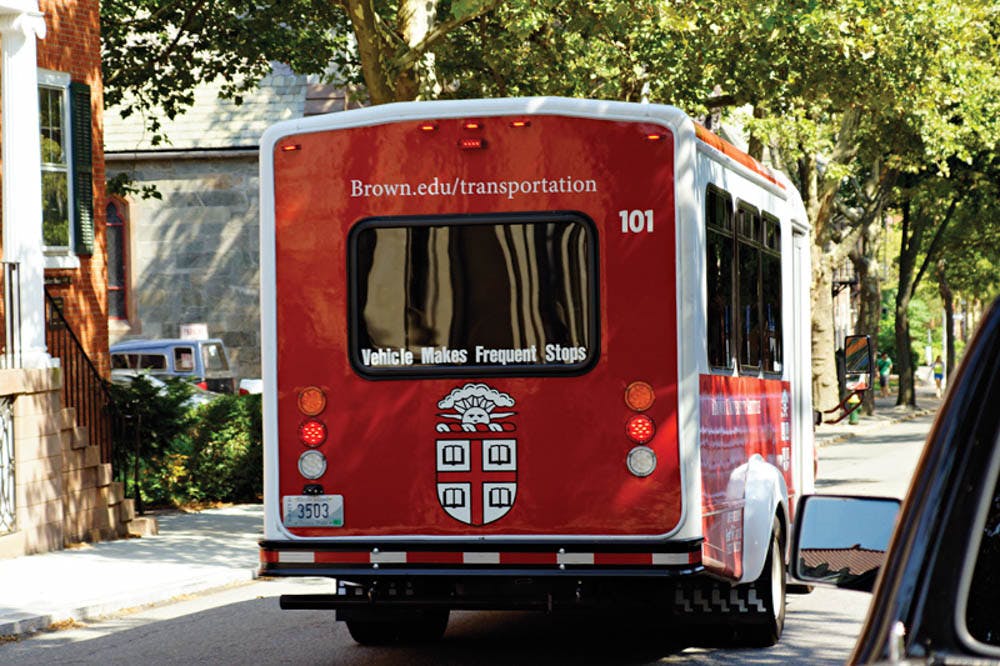Fans of the University’s trusty shuttle routes may have noticed that their options have multiplied this semester, as the Transportation Office has implemented additional and improved daytime and evening shuttle routes.
The Transportation Office reimagined its daytime shuttle route — separating the original route into two that service Pembroke Campus, Fox Point and the Jewelry District. It also added an additional reverse direction shuttle route to its already popular evening offerings, according to a community-wide email from the transportation office.
The route alterations were sparked by the University’s decision to move a large proportion of its administrators to its new South Street Landing location in the Jewelry District, said Assistant Vice President of Business and Financial Services Elizabeth Gentry. With the first major move of administrators to South Street Landing set to occur in late October, the Transportation Office sought the aid of Nelson\Nygaard, a transportation consulting firm, to redesign its shuttle routes to accommodate the new location off of College Hill. The company surveyed students and administrators already working at off-campus locations, as well as administrators who would be relocated to the Jewelry District in order to make recommendations to the University, Gentry said.
“One of the things that was really important was creating an express route between College Hill and South Street Landing without a lot of stops,” Gentry said. This recommendation was actualized in the form of an express route that now connects College Hill to the new South Street location from 7 a.m. to 7 p.m on weekdays, running every 10 minutes.
In addition to an express route, the transportation office also decided to implement a new daytime “connector” route. The newly designed connector route follows a longer course, circling campus and carrying students and administrators down to the Jewelry District, Rhode Island Hospital and Alpert Medical School before looping back up to the Fox Point neighborhood.
The expanded route options necessitated additional shuttles. The University purchased two 20 passenger buses in order to service the express route. The old 13 passenger vehicles now service the new connector route.
With additional vehicles, the Transportation Office was able to turn its attention to its evening shuttle offerings, Gentry said. She said community members often complained that evening routes only travelled in one direction, meaning that depending on where a student sought to travel, a simple trip from the Rockefeller Library to the student’s dorm in Andrews Hall could turn into an unexpectedly long ride. The office decided to accommodate this request, creating a counterclockwise route.
“We were really happy that, by having additional shuttles, it gave us the opportunity to add that program,” Gentry said.
In redesigning its new shuttle routes, the Transportation Office also sought the advice of Brown’s Department of Public Safety to ensure that the new routes would optimize community member safety.
A representative from DPS provided “input and (took) part in discussions towards finalization of the plan that was implemented,” said Deputy Chief of Police Paul Shanley in an email to The Herald. DPS recommended that its phone number be added to signs along the route to increase student safety, Shanley wrote.
Students looking to take advantage of the new routes should download the TransLoc Rider application to their phones, Gentry said.





